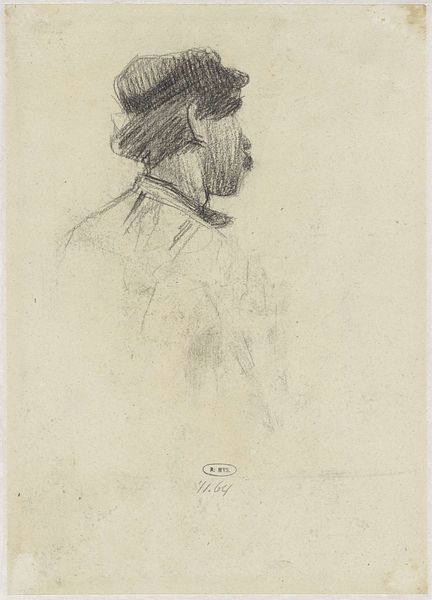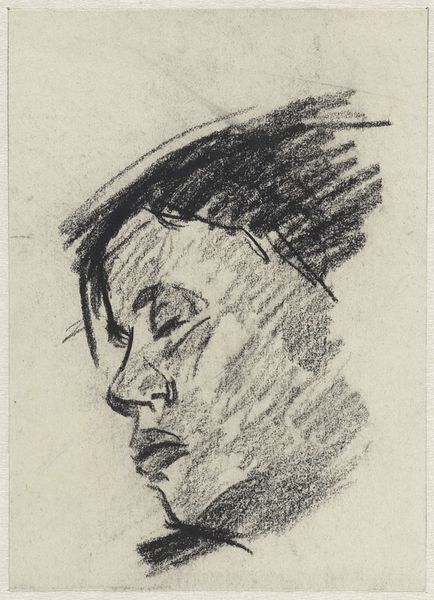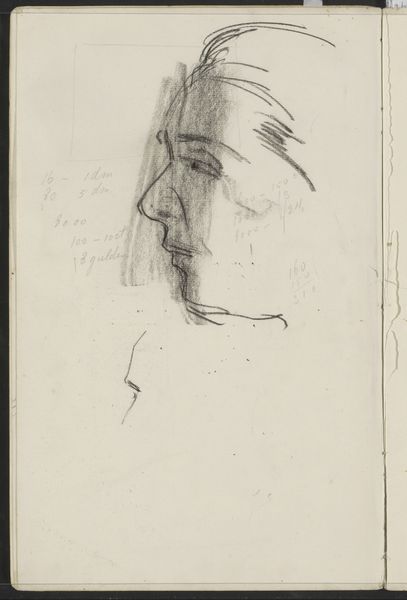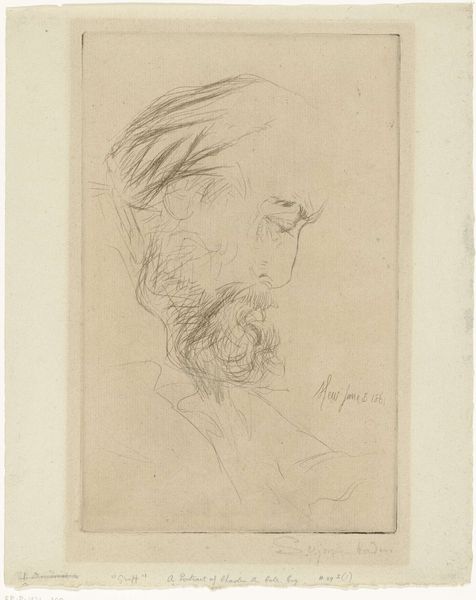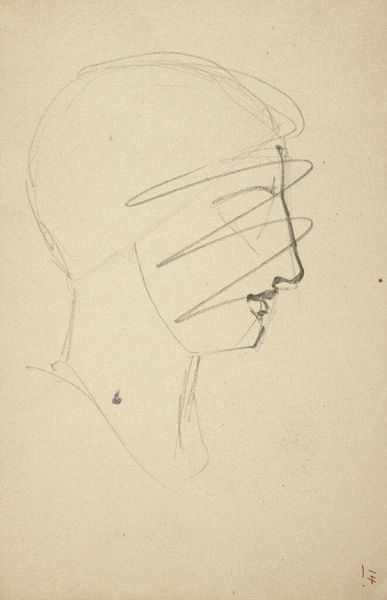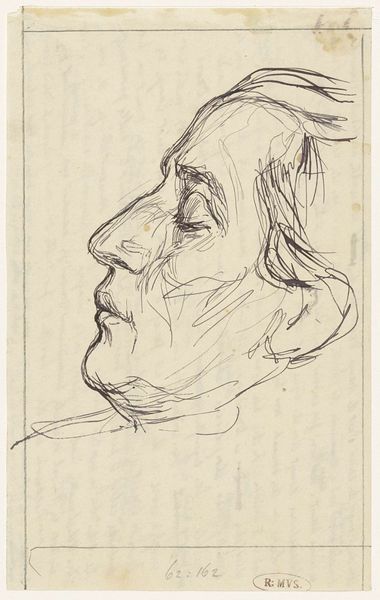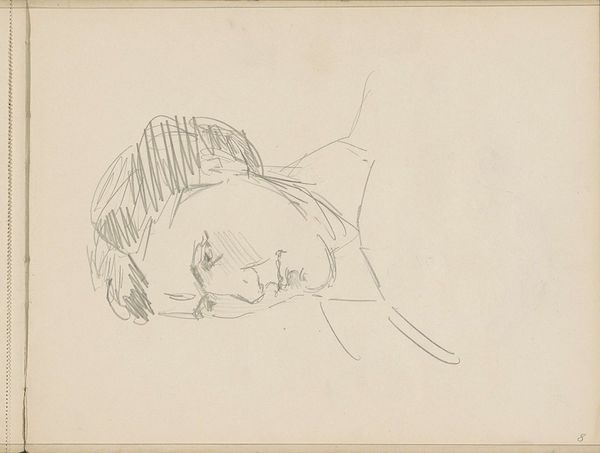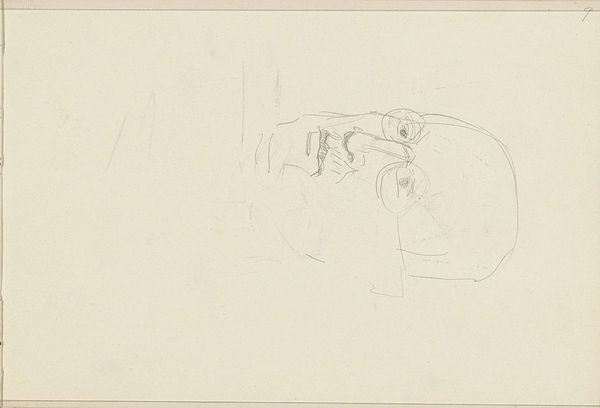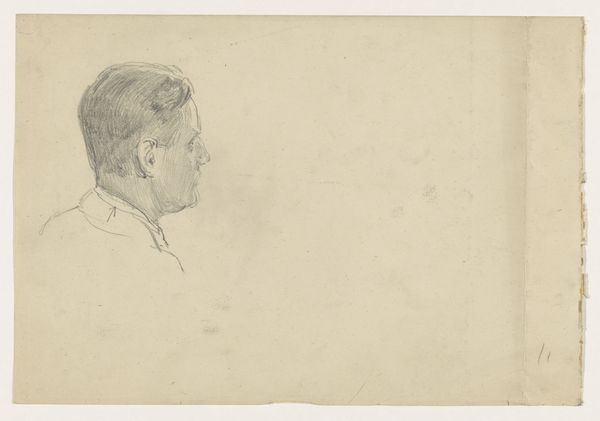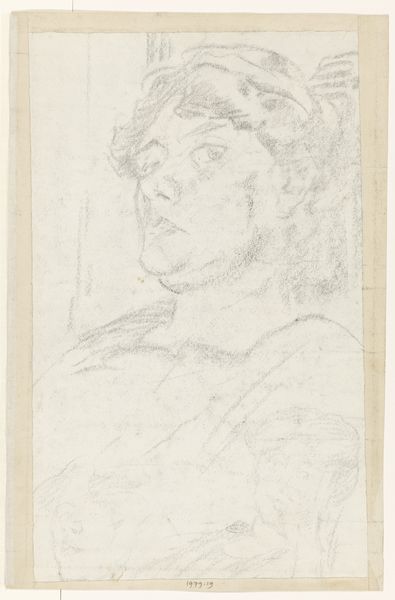
drawing, pencil
#
portrait
#
drawing
#
pencil sketch
#
figuration
#
pencil
#
line
#
academic-art
#
realism
Dimensions: height 333 mm, width 210 mm
Copyright: Rijks Museum: Open Domain
Curator: The drawing before us is entitled "Portret van een man, naar rechts"—or "Portrait of a Man, Facing Right"—created by Jan Veth, sometime between 1874 and 1925. The medium is a simple pencil on paper, yet it yields a very interesting result. Editor: Interesting indeed. My immediate impression is a sense of introspection; he's gazing downward, almost lost in thought. The loose sketch of what seems to be hair, combined with the precisely defined facial features, create this striking contrast, as if the internal struggles of the figure are weighing heavy on the page. Curator: That's an intriguing interpretation. From my perspective, Veth's skill lies in utilizing minimal means—basic graphite and paper—to suggest form and character. This wasn't simply about capturing likeness; it seems to emphasize the physical manifestation of labor that creates form and meaning from basic elements. You see the rawness of process in those gestural lines. Editor: But surely the artist wasn't just toiling away for the sake of labor. Looking at the subtle detailing around the eyes and mouth, one cannot ignore the evident melancholia and perhaps even a sense of resignation present within this figure, something possibly representative of the period. Was this portrait perhaps a contemplation on class and industrial advancement, an unsung worker’s experience visually documented? Curator: Potentially. However, focusing primarily on a representational level can cause us to neglect the tangible nature of the piece. I argue that exploring the methods of academic art as it intersects with realism creates a different view. He makes evident that this is not simply "representation." He creates material realities as well. Editor: True, we are seeing raw materiality manifested on paper. Though to appreciate how a seemingly ordinary medium and academic aesthetic converge into something reflective of a broader narrative opens it to vital dialogue. After all, isn’t that the very objective when analyzing works like these, ensuring the artistic creations act as vital tools for engagement? Curator: I see your point, this exploration invites dialogue from all perspectives. It’s quite a multifaceted piece when looked at more deeply than just subject matter and materiality. Editor: Agreed. And understanding these multiple viewpoints is, fundamentally, why we're all here.
Comments
No comments
Be the first to comment and join the conversation on the ultimate creative platform.



